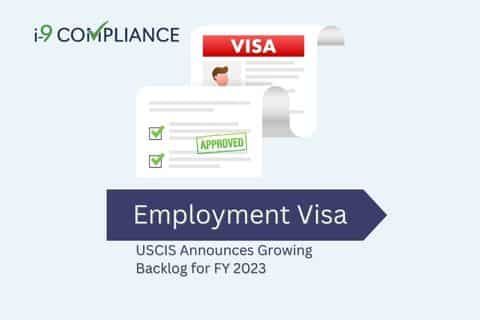USCIS Announces Growing Employment Visa Backlog for FY 2023

November 06, 2023
With the start of the fiscal year 2024, the outlook for employment-based visas appeared bright. However, U.S. Citizenship and Immigration Services (USCIS) has warned that it may not stay that way. The rising demand for employment-based immigration significantly outpaces the declining availability after the pandemic. As such, visa number availability will continue falling behind demand in the months ahead.
According to the USCIS, the wait time for those awaiting permanent resident status in employment-based 2 (EB-2) and 3 (EB-3) categories has increased. This wait time has affected those from India the most, for which the queue has reached 1.1 million applicants. The vast majority of these applicants fall in the EB-1 and EB-3 categories.
As a result, the USCIS stated that it will no longer accept Applications to Register Permanent Residence or Adjust Status (Form I-485) for EB-2 or EB-3 during fiscal year 2024. This decision will severely impact skilled workers in these categories. However, those still facing staggering wait times for lawful permanent resident status (green cards) will suffer the worst impact.
Those seeking lawful permanent resident status will file a Form I-485 in the last stage of the process. However, Congress has limited the number of available immigrant visas. Congress then divides the available visas further into family-based and employment-based categories.
For the employment-based categories, Congress has set aside 140,000 visa numbers for each fiscal year. The EB-2 category is for positions requiring an advanced degree or employees with exceptional abilities in the arts, sciences, or business. The EB-3 category is for positions requiring a bachelor’s degree at minimum.
According to the USCIS, the agency has received many adjustment status applications for EB-2 and EB-3 India. Based on current estimates, filing dates for these categories may move very slowly for the foreseeable future. It also reflects the change over previous fiscal years. One example of the radical change is the number of unused family-based visas the USCIS carried over to the employment-based categories due to a lack of demand during the pandemic.
The lack of available immigrant visa numbers means many workers will remain on temporary employment-based visas like the H-1B. As a result, employers must verify employment eligibility (Form I-9) regularly for the affected workers. One way to keep track of these requirements is with an electronic I-9 management system. This system can guide personnel through every step and provide reminders when action is required to maintain uniform compliance.
Increase your hiring and verification efficiency today with I-9 Compliance automation